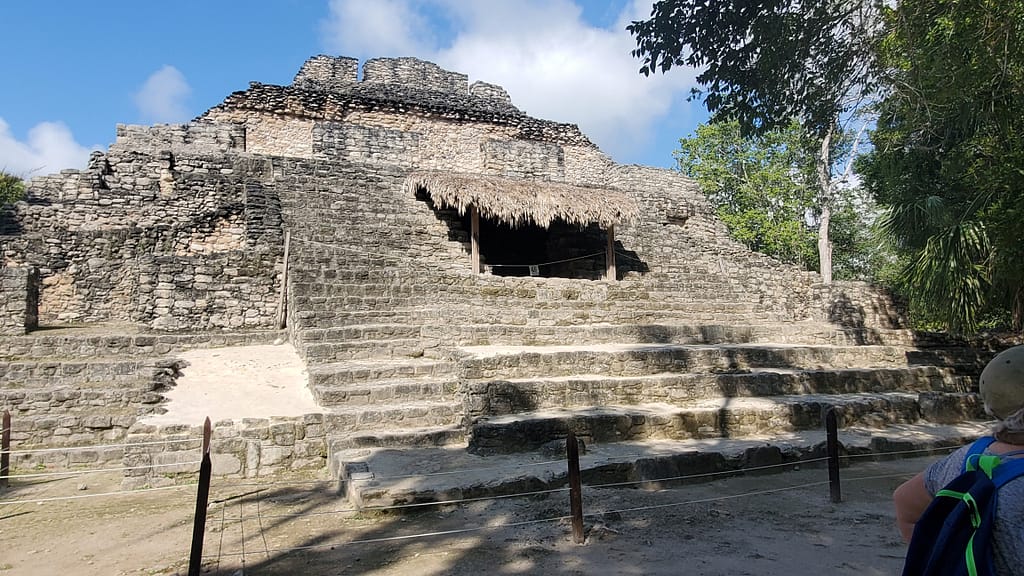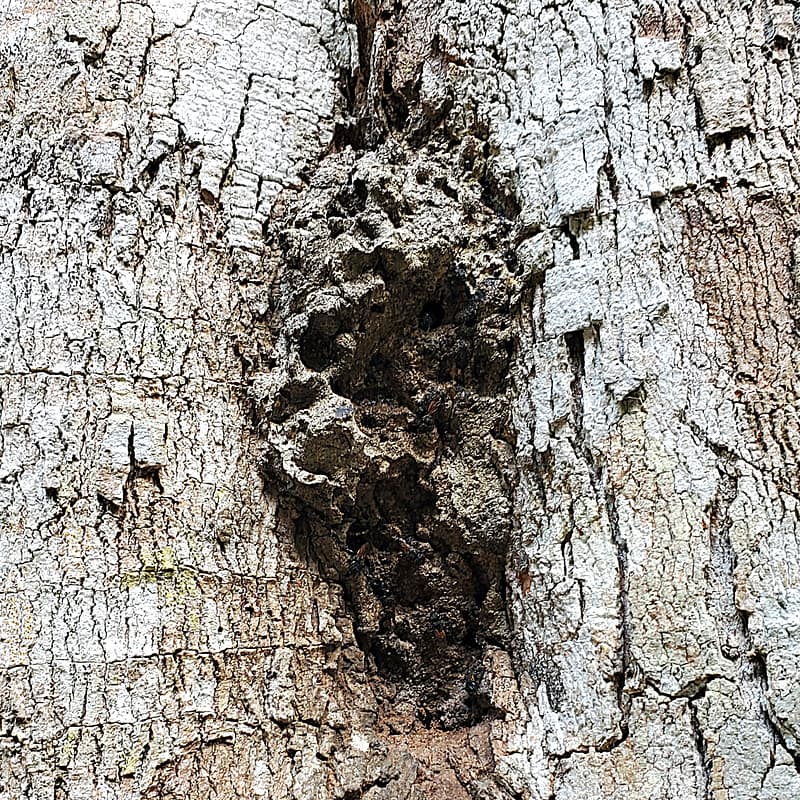On our recent trip to the Caribbean, I did not get to see any sharks, although I sure stared at that water for hours on end! But when we were visiting the Mayan ruins of Chacchoben, we stumbled upon a cool little critter. Of course, our purpose there wasn’t to see wildlife, it was to see the ruins, and they were worth the trip. These particular ruins were only discovered in the 1970s! I’d assumed that old ruins like these were just out in the open where they would be obvious to explorers, but our guide showed us what looked like a big dirt mound and told us that was another feature of the ruins that hadn’t been excavated yet. It just looked like a pile of grass, dirt, and rock. He said that what archaeologists do is carefully clear off the top layer to expose what is left of the building underneath. That layer of dirt and grass that is visible hid them away for all of these centuries, and it created a protective layer that keeps much of the building intact below the surface. Not everything remains, so some of what we see in the current “ruins” has been rebuilt to reflect what it would have looked like, but just the fact that some of the buildings were thousands of years old is pretty awe-inspiring.

As we were walking through the jungle areas in between each of the pyramids, we were mesmerized by all of the tropical trees. Kapok and silk floss, massive palms called Calhoun palms, all thriving in the tropical climate of the Yucatan peninsula. And as our guide walked us through one part of the jungle, he pointed out a hive of bees in a tree and told us they were Mayan Stingless Bees. It made us wonder how our bees were doing at home! And it was so interesting to see these bees zipping in and out of the hole in the tree. Apparently, even the ancient Mayans kept domesticated hives of these stingless bees. They may have done it more for the beeswax, because these types of bees, unlike our European Honeybees, don’t make much honey. The limited quantities they produce are apparently richly flavored and delicious, but because not much is produced it can be really expensive!

Very cool to see these bees flitting in and out of a tree nestled in the middle of the Yucatan Peninsula. I have to admit, the idea of stingless bees is one I could go along with, given the number of times I’ve been stung checking on our hives, but for now we’ll stick to the high honey producers!
The same weather we enjoyed when we were in Mexico seems to have found its way back here! These warm days are perfect for getting your spring garden projects going! And don’t forget that Valentine’s Day is right around the corner. I promise you, your sweetheart doesn’t want chocolates for V-Day. They want plants! So bring them out to Kerby’s, and if you want to have some fun together, sign up for this weekend’s Valentine Flower Arrangement Make & Take. Floral expert Jo will lead this hands-on class where you will create your own flower arrangement that you’ll get to take home to enjoy for yourself or to gift to your Valentine. You can get tickets here (note that it is one arrangement per ticket).
And with this warm weather, veggie season is almost upon us as well, so mark your calendars for our Spring Veggie Gardening Seminar on February 15th at 10 am. We’ll have lots of veggies, herbs, seeds, and soil for you to get those 2025 gardens started. We’ll see you in the garden.







